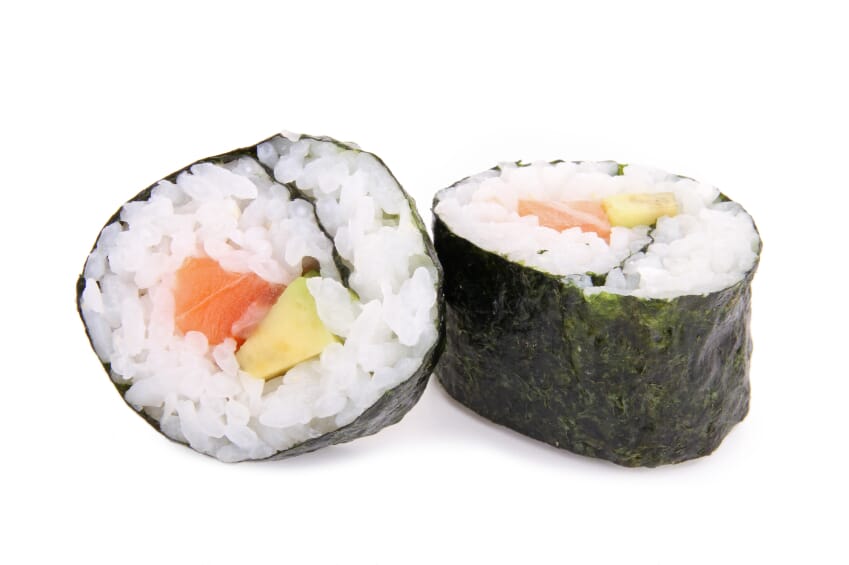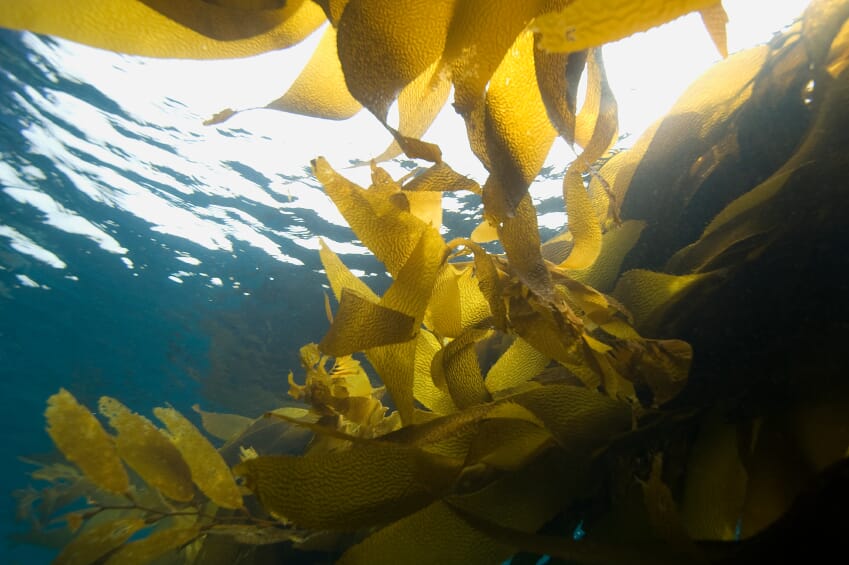The story goes that in the 1600s fishers from a small town in what is now the Tokyo metropolitan area constructed a fence in the sea to create a fish farm to meet the demands of Shogun Tokugawa’s appetite for fish.
Over time the fishers noticed seaweeds growing on the fence – and it was very easy to collect.
Algaculture was born, and today statistics from The Food and Agriculture Organisation reveal that algaculture has been steadily increasing. In 2012, over 23.8 million tonnes of algae was produced, with an estimated value of $6.4 billion.
Nori – the paper-like seaweed commonly used in sushi, which is still produced entirely in Asia, is now worth U$2 billion alone. 
This often overlooked industry doesn’t just produce large seaweeds for human consumption, but a range of different algae destined for a variety of different uses.
Macroalgae species like kelp and sea-lettuce, are the most traditionally harvested algae. Alongside producing products that can be directly consumed, macroalgae also play a vital role in products.
Carrageenan which is derived from red algae species for example, are used as gelling agents in foods, as emulsifiers, stabilisers, and in personal care products. Macroalgae farming can be relatively low-tech, requiring low start-up capital, simple equipment, and low ongoing costs to run the farm.
The ease of economic accessibility has allowed macro-algaculture to operate as a source of livelihood in relatively economically poor communities, such as in the Philippines where seaweed makes up 70% of their aquaculture production.
Filipino algaculture is primarily produced by individuals, families, or cooperatives – and usually undertaken by women and children. The work however is labour intensive, with algal embryos typically attached to twine attached to poles in lines or as a net, and placed in coastal waters. Harvesting is usually done by hand.
The low energy intensive process currently used for macro-algal production is just one of the reasons why algaculture is considered to be an environmentally friendly form of farming. Other factors include the rapid growth of the algae, and the lack of need for fertilizer and freshwater inputs as occurs with land-based plants.
Growing seaweed in the ocean may indeed divert pressure off the already burgeoning terrestrial land, but questions have been raised as to whether we should be altering coastal habitats – including areas used by already vulnerable marine species. Just how much area would be needed partly depends on the application of the macroalgae. 
In 2010 Ronald Osinga, a fisheries and aquaculture scientist based at Wageningen University published findings suggesting that an area totalling 180,000 km2 of Ulva lactuca, commonly known as sea lettuce, would be sufficient to provide enough protein to feed the entire human population. Whether the human population as a whole is prepared to embrace sea lettuce as a food is another matter.
Surprisingly, microalgae – microscopic unicellular species –also has a long history of human use, with suggestions that it was consumed in parts of China during times of famine some 2,000 years ago.
Its cultivation however is a more recent phenomena. Unlike macroalgae, microalgae are free-floating organisms, so production takes place in closed containment systems – ponds or Photobioreactors for instance. Microalgae such as Aphanizomenon are regarded to have high protein content, equal to or higher than that found in more conventional plant-based foods.
Microalgae for human consumption typically comes as supplements, liquids or pastes. Of particular interest is microalgae’s application for providing Omega-3 fatty acids, currently obtained from marine fatty fish.
Although the creation of economically-viable large-scale production of microalgae developed to meet human demand for Omega-3 is currently challenging, work by scientists such as Catalina Adarme-Vega, a PhD student at University of Queensland, suggests that it is feasible.
Equally challenging may be the development of microalgae for fuel – an idea that has garnered attention on and off for decades.
In 2013 scientists from the Pacific Northwest National Laboratory used a process called hydrothermal liquefaction to convert a mixture of water and algae into a crude-oil like substance in less than an hour. The cost, if produced on a large scale, could allow industry to sell the fuel for as little as U$2 a gallon.
In 2015, organic chemist Greg O’Neil who is based at Western Washington University and fellow scientists reported on a method to obtain both biodiesel and jet fuel from a single algae species - Isochrysis.
Research in algal-based fuels is still in the early stages, but with increasing interest in fossil fuel reductions, interest alternative fuel sources, like algae is on the increase. Research, development, and indeed economics, may not be the biggest issue for algal-based fuel sources however.
The US Department of Energy estimate to fully replace all petroleum fuel in the America, an area of 15,000 square miles (a little larger than the State of Maryland) would be needed for cultivation.
November 2015



